Issue Archive
Table of Contents
BLOOD COMMENTARIES
PERSPECTIVE
Chilling controversy: cold-stored platelets for prophylactic transfusions
Cold-stored platelets have been recently licensed by the US Food and Drug administration for the treatment of bleeding patients. In this Perspective, Stolla et al describe clinical data supporting their use and raise the interesting concept of assessing cold-stored platelets for bleeding prophylaxis, particularly in situations when room temperature platelets may not be available.
HOW I TREAT
How I treat patients with CLL after prior treatment with a covalent BTK inhibitor and a BCL-2 inhibitor
Covalent Bruton tyrosine kinase (BTK) inhibitors and BCL-2 inhibitors have revolutionized the treatment of chronic lymphocytic leukemia (CLL) with significant improvement in outcomes. However, high-risk patients eventually progress and can become resistant. In this How I Treat, Shadman and Davids review treatment approaches for these patients with double-refractory CLL, illustrating their recommendations with 4 case examples and highlighting the need for development of new drugs for high-risk CLL.
CLINICAL TRIALS AND OBSERVATIONS
RGI-2001 for the prophylaxis of acute graft-versus-host disease after allogeneic HCT
Clinical Trials & Observations
Graft-versus-host disease (GVHD) remains a major cause of morbidity in allogeneic hematopoietic stem cell transplantation recipients. In a phase 2b clinical trial, DeFilipp and colleagues show that RGI-2001, a liposomal derivative of α-galactosylceramide that inactivates invariant natural killer T cells, improves day 180 grade II to IV acute GVHD–free survival without increasing relapse compared with a registry-based control group. These results support further evaluation of this strategy in randomized clinical trials.
IMMUNOBIOLOGY AND IMMUNOTHERAPY
Inflammasome-resistant IPSC-derived myeloid-derived suppressor cells ameliorate xenogeneic graft-versus-host disease
Myeloid-derived suppressor cells (MDSCs) show promise as immunosuppressive therapy, but scalability remains a challenge. Ma and colleagues report a novel approach to generate off-the-shelf MDSCs from human induced pluripotent stem cell (IPSC)–derived CD34+ cells, with potent T-cell suppressor function in vitro and in vivo, that are capable of overcoming inflammasome-induced loss of suppressor function. In a xenogeneic graft-versus-host disease model, these cells improve survival and reduce complications, overcoming several limitations that have hindered the clinical translation of MDSCs.
Sequential targeting in multiple myeloma: talquetamab, a GPRC5D bispecific antibody, as a bridge to BCMA CAR-T therapy
Clinical Trials & Observations
Although chimeric antigen receptor (CAR) products targeting B-cell maturation antigen (BCMA) have delivered unprecedented responses in relapsed/refractory multiple myeloma (RRMM), the 6- to 8-week manufacturing time may limit their applicability. Dhakal and colleagues report the results of a multi-institutional retrospective study evaluating talquetamab, a bispecific antibody targeting G-protein–coupled receptor, family C, group 5, member D (GPRC5D), as bridging therapy prior to CAR T-cell therapy, with 71% of patients responding to therapy, 89% going on to receive CAR T cells, and limited toxicity. These results support the use of talquetamab as bridge therapy for patients with RRMM.
LYMPHOID NEOPLASIA
Enhancer heterogeneity in acute lymphoblastic leukemia drives differential gene expression in patients
Cancers with low mutation burdens can exhibit significantly diverse transcriptional signatures and clinical phenotypes. In this study, Smith and colleagues found that tumor cells from patients with acute lymphoblastic leukemia harboring the KMT2A::AFF1 rearrangement exhibit a highly heterogeneous transcriptional landscape, dynamically shaped by the presence of unique enhancers that are patient specific and may influence disease trajectory.
MYELOID NEOPLASIA
Preclinical characterization of TGRX-678, a brain-penetrant allosteric inhibitor of BCR::ABL1
Resistance to tyrosine kinase inhibitors remains challenging for the treatment of chronic myeloid leukemia (CML) and Philadelphia-chromosome–positive acute lymphoblastic leukemia (Ph+ ALL) with central nervous system (CNS) relapse. Shi and colleagues report the biological preclinical characterization of TGRX-678, a new allosteric BCR::ABL1 inhibitor, in CML and Ph+ ALL xenograft models, showing efficacy in inducing tumor regression with CNS penetration and increasing survival in CNS tumor models. An ongoing phase 1 study will determine the safety of TGRX-678 in humans.
Fusion oncoproteins and cooperating mutations define disease phenotypes in NUP98-rearranged leukemia
NUP98-rearranged leukemias comprise up to 7% of cases of pediatric acute myeloid leukemia (AML) with striking clinical heterogeneity and poor response to therapy. Umeda and colleagues report the results of a large-scale genomic study of NUP98-rearranged AML demonstrating the effect of cooperating mutations on phenotype with unique cellular hierarchies and differential sensitivity to menin inhibition. These data reinforce the concept that leukemic identity is driven by the complex interplay of fusion partners, chromatin occupancy, comutations, and hematopoietic context.
PLATELETS AND THROMBOPOIESIS
circFUT8 promotes proplatelet formation by interacting with IGF2BP2 and stabilizing TNS1 mRNA in megakaryocytes
Megakaryocytes and platelets express high levels of a specific circular RNA, circFUT8. Wu and colleagues report that circFUT8 interacts with insulin-like growth factor 2 mRNA-binding protein 2 (IGF2BP2) to promote the stabilization of tensin-1 (TNS1) mRNA shown to be necessary for F-actin polymerization and assembly in megakaryocyte proplatelet formation and platelet production. These findings have potential implications for ex vivo platelet production.
THROMBOSIS AND HEMOSTASIS
A novel cause of type 1 von Willebrand disease: impaired exocytosis of Weibel-Palade bodies due to biallelic MADD variants
Von Willebrand disease (VWD) type 1 is characterized by low penetrance and variable expressivity, with approximately 40% of patients with mild deficiencies not exhibiting mutations in the von Willebrand factor gene (VWF). In this study, Hordijk and colleagues identified patients with genetic variants in the guanine exchange factor MAP kinase–activating death domain (MADD) that impair VWF secretion from endothelial cells and possibly cause VWD type 1.
BLOOD WORK
-
Cover Image
Cover Image
![issue cover]()
Endothelial colony-forming cells of a patient with biallelic MADD variants. Monomeric enhanced green fluorescent protein (mEGFP)-Rab3D (green) is absent from Weibel-Palade bodies (red). See the article by Hordijk et al on page 2133.
- PDF Icon Front MatterFront Matter
- PDF Icon Table of ContentsTable of Contents
- PDF Icon Editorial BoardEditorial Board
Advertisement intended for health care professionals
Email alerts
Advertisement intended for health care professionals


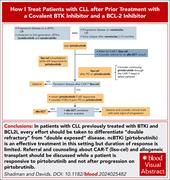
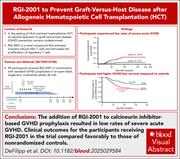
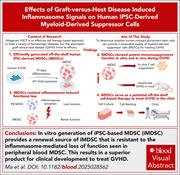
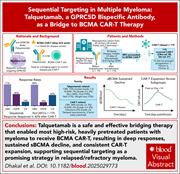
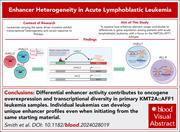
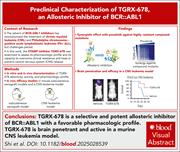
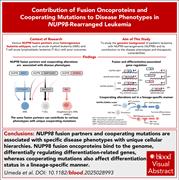
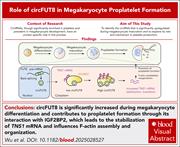
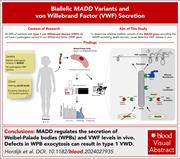

The iNKT-Treg axis in GVHD control
Clinical Trials & Observations